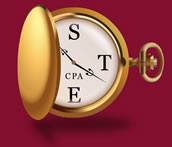While tax season 2022 may be months away, New Year’s Eve will be here before you know it. The fourth quarter is the time for some proactive tax planning to lower your 2021 tax bill. For business owners, tax planning shouldn’t be a once-per-year exercise when filing your taxes. With extensions, you may be able to delay filing your 2021 taxes until late 2022. However, many tax planning moves that can help lower your total taxes owed may need to be made before the end of the current year.
Review How Your Business Is Set Up
What is the corporate structure of your business? Are you a sole proprietor, S-Corp, LLC, Partnership or C-Corp? As your business and income grows, the best structure for your business may change. This is something you should review with your CPA and certified financial planner every few years (more often if your business is growing rapidly or if there have been changes to the ownership).
Maximizing the benefits of a retirement plan can help you save on taxes and get to that dream
Review Your Business Retirement Plan
One of the best ways for small business owners to slash their taxes is to establish a retirement plan. This could be anything from a SEP IRA to a Solo 401(k), up to the combination of a 401(k) with a defined-benefit pension plan. Would you rather write a big check to the IRS or to your own retirement account? The choice is obvious to me. In case you were wondering, high-income small businesses can potentially defer income taxes on hundreds of thousands of dollars per year.
Here are a few of the most common retirement plans for high-income small business owners.
SEP IRA – If you are self-employed, you can contribute 20% of your self-employment earnings into a SEP IRA, per year, with a maximum contribution of $58,000 for 2021. There are no catch-up contributions for SEP IRAs. With no year-end deadline, a SEP IRA can be set up just before filing your taxes for the previous year.
Solo 401(k) – Typically, a Solo 401(k) will allow for the largest pre-tax contributions, which should translate into fewer taxes being owed. Business employees are allowed to contribute up to $19,500 for 2021 plus a $6,500 catch-up contribution if they are at least 50 years old. Additionally, the business will be able to make a profit-sharing contribution, up to 25% of payroll. That means a grand total of $58,000 (or $64,500 for those over 50) could be saved provided the individual contributes the maximum amount allowed by the IRS ($19,500 for 2021) and the business contributed the maximum allowable amount for payroll.
You can also benefit from a Roth Solo 401(k) for the employee portion of your contributions, $19,500 plus a $6,500 catch-up contribution for business owners over the age of 50. If your spouse also works with you in the business, he or she can be included in the plan, essentially doubling the amount you can contribute and the tax savings.
Defined-Benefit Pension Plan – For those needing huge tax savings, the defined-benefit pension plan is king. Combine it with a 401(k) profit-sharing plan, and your business could sock away a few hundred thousand dollars per year. You may also hear this called a cash-balance plan.
Defined benefit pension plans are the most complicated of the small business retirement plans to set up because the plan design is complex and time-consuming. If you think this may help your business keep more of its hard-earned money, talk to your trusted fiduciary financial planner ASAP. The extra work is more than worth it for high-income small-business owners willing and able to max out contributions to their 401(k) and defined benefit plans. Contribution limits will depend on age and income, but they can often run north of $150,000 per business owner per year. The tax savings can be huge, especially for those in high-tax states like California and New York.


Leave A Comment